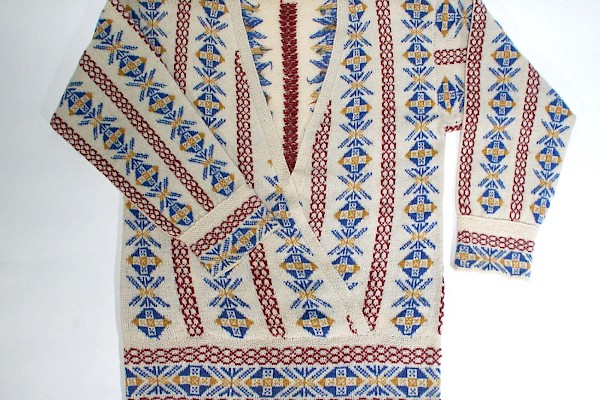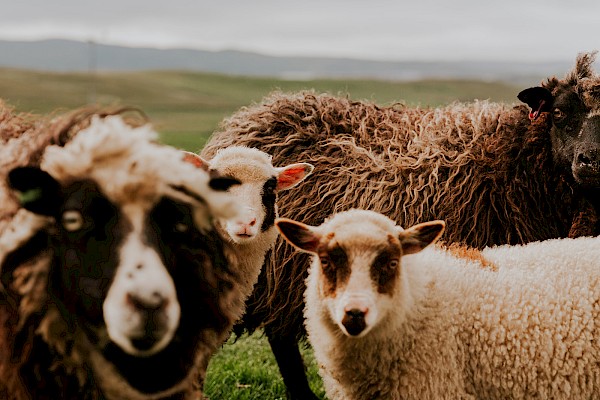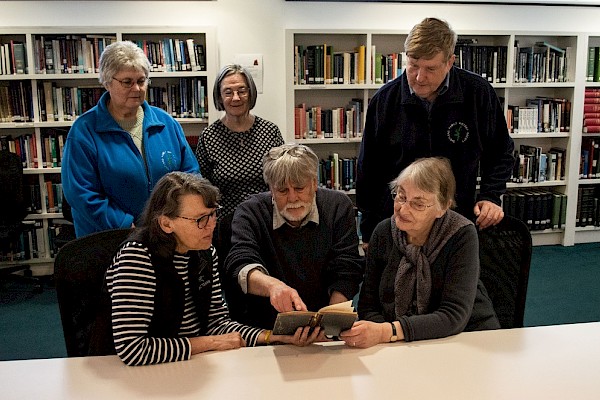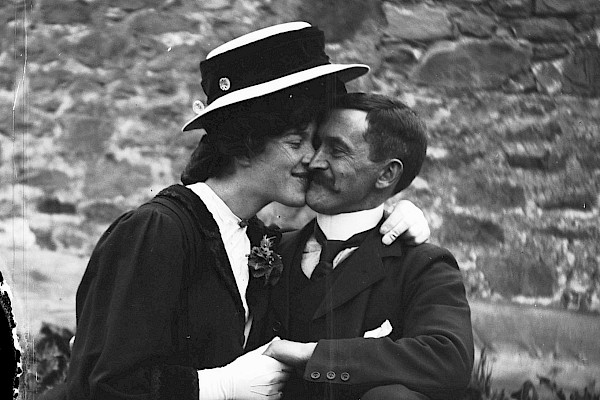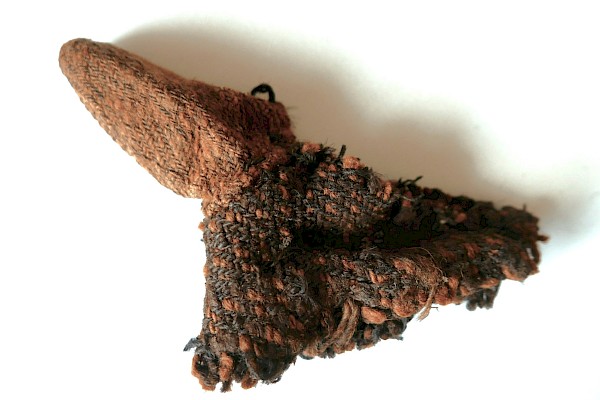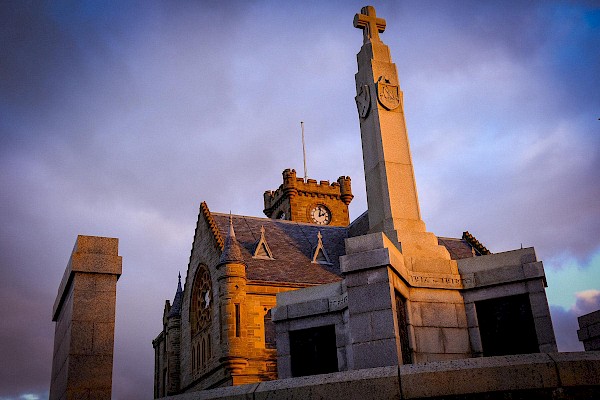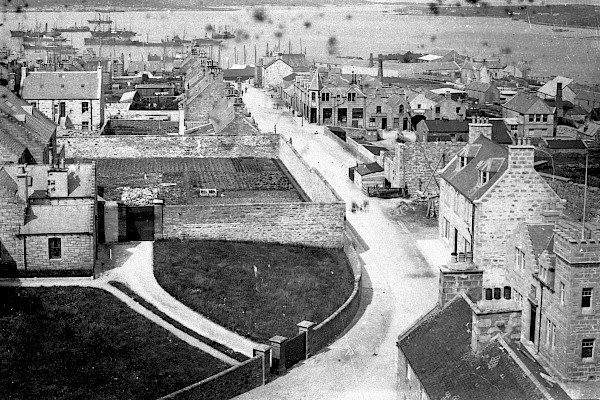The Elvira
Stories of shipwreck have long occupied the Shetland imagination. One Shetlander, R. Stuart Bruce (1873-1951), devoted much of his life to gathering a prodigious amount of information about Shetland wrecks. A correspondent of his, Tom Henderson (1911-1982), also gathered information and documents, helped by his father, a Receiver of Wreck. Tom became the first curator of the Shetland Museum, and the Archives hold his papers, D25. Let’s look at one of those wrecks.

Ships are traditionally designated as she, and perhaps the Elvira of Halifax, Nova Scotia, had her own kind of feminine elegance. Later in the story, another kind of femininity, women of character, appears.
Francis Heddell, a customs officer in Lerwick, kept a memorandum book. For 14 October 1837 he made a note about the Elvira, bound from Hamburg to Jamaica with flour, ashore at Noss, Dunrossness. Also one lad survived of the crew. That was Walter Ross. As was his duty, Heddell made his way to the site on October 16.

A dreadful night and morn[in]g of wind & rain W.S.W. At noon left town for the wreck at Noss & reached it about 6 p.m. where I witnessed a scene approach[in]g to murder ‘twixt the watch & the natives aided by C[unnings]burghers. 65 b[arre]ls flour & a very small part of the vessel salved & sold on 20 & 21 Octr. and on 22 left Brow for H[elliness] where I arrived at 2 p.m.
There’s another quotation worth looking at, from Henry Cheyne of Tangwick, Aberdeen Journal 6 September 1837.
The crops here look well, but very backward, even the bear standing green, and all agree that, even with favourable weather, they cannot be properly available before the 10th or 15th October.
1837 had been a hard year, and was getting little better. News passed quickly of the wreck – flour! People were needy enough to gather up the lumps that floated ashore. Men came from as far away as Gulberwick. Conveniently for them, the Customs officers stored the flour casks in a booth at Spiggie. According to Tom Henderson, the nightwatchmen appointed didn’t have their hearts in the job. He said there were over 200 people there, including women.
Around eight the crowd approached, singing Death or Victory. The Customs Officers fired pistols over their heads, then cleared, leaving a James Jamieson swinging an axe until he was disarmed. Before the door was broken open John Adamson, a Cunningsburgh man, was said to have made a revolutionary speech denouncing lairds and all their works. The flour was distributed.
What happened after that? The story entered the newspapers, and then legend. The Orkney and Shetland Journal 1st January 1838 remarked –
The authorities here (Lerwick) have been taking precognitions preliminary to the seizure of the ringleaders; but it is said that they have entered into a “solemn league and covenant” to defend themselves against the authorities.
In fact, very little seems to have happened to the protagonists at Spiggie at all. It wasn’t unusual in these kind of cases. Witnesses often found that it was very dark, they couldn’t see well, and all the people they saw were strangers. Or so they said.
Something did happen when Sheriff Officers went to apprehend John MacPherson, son of Robert MacPherson at Greenmow, Cunningsburgh. His sister, Margaret MacPherson would never have known the word feisty, but she was a lass able for a challenge, and stuck up for her brother. Cunningsburgh tradition-bearer Laura Malcolmson told the story on the BBC referring to certain liquids of the household. A bit coy that. The Sheriff Court proceedings were a bit more frank
a bucket full of sour urine or other dirty water [thrown] into the faces of the saids William Rusland and Robert Cheyne
Rusland and Cheyne were the Sheriff Officers. Rather more may have gone on. The Orkney and Shetland Journal February 1838 said the officials were ...
… assailed by three or four amazonian damsels ... The officers effected their retreat as speedily as possible, retiring amidst a shower of stones, discharged from the fair hands of the Cunnisburgh ladies. They ran to Lerwick as fast as their feet could carry them …
Shetland households collected urine and used the fermented results to treat wool. Pungent stuff. Rusland and Cheyne may have endured social distancing for a while after encountering the MacPherson greth tub. Margaret got fined ten shillings. It was probably difficult to pay but it doesn’t seem to have held her back. She married, had four children, and lived into old age, dying at 84 in 1897. One of her descendants, a genealogist, came into the Archives lately. A most interesting ancestor indeed.
Sources:
- D1/400 'Wreck registers' of Robert Stuart Bruce. [1873 – 1951].
- D25/17/2 Memorandum book of Francis Heddell, Lerwick. June 1831 – March 1844.
- D25/177 Notebook with account by Tom Henderson of the wreck of the Elvira at Spiggie in 1837.
- SC12/6/1837/174 Petition (deforcement – opposing sheriff officer about to apprehend men from the district by flinging sour urine at them) (Criminal) 20 December 1837.
- TA 104 Laura Malcolmson, undated BBC broadcast probably 1960s, “The Tale of a Tub.”
